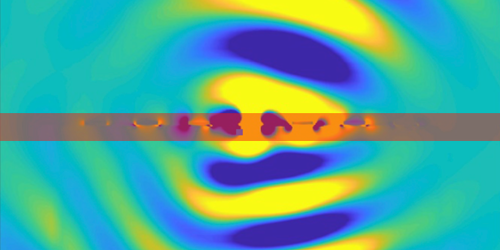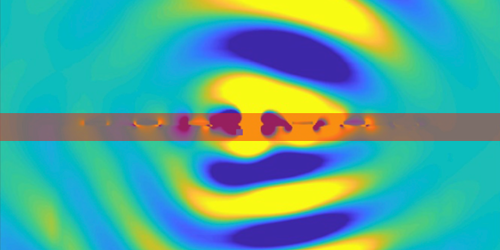Plasmonic Metamaterials Bend Light Backwards
Materials that refract light the “wrong way” could be used to make optical lenses that can image objects smaller than visible wavelengths. So-called negative refraction has been demonstrated in thin films in which surface plasmons—collective charge oscillations—have been excited by a powerful laser. Now, an international team involving Purdue University, Indiana, the University of Glasgow, UK, and Imperial College London show that they can more efficiently achieve the same effect by placing an array of nanoscale antennas on the film.
The base layer for the team’s device was a 40-nm-thick film of indium tin oxide (ITO), a transparent conductor with many optoelectronics applications. Shining a laser onto an ITO film excites a plasmonic oscillation—specifically the “epsilon-near-zero” (ENZ) mode—at the material’s plasma frequency. These oscillations produce nonlinear optical effects but triggering them usually requires an intense light beam.
To stimulate the phenomenon with a weaker, more widely available light source, the team fabricated a square-lattice pattern of 30-nm-tall gold nanoantennas on top of the ITO. These antennas more readily captured the incoming laser energy. As the antennas’ plasma frequency matched that of the ITO film’s ENZ mode, the plasmons produced in the antennas coupled with those in the ITO film to form a single, two-component plasmonic device.
To measure the optical properties of their device, the researchers shone a second laser onto it obliquely while it was being stimulated. The reflected component of this second beam reversed entirely, backtracking along its initial path. The refracted component, meanwhile, continued on a deflected trajectory through the ITO film, bending in a direction opposite to that of a refracted ray in conventional optics.
This research is published in Physical Review Letters.
–Marric Stephens
Marric Stephens is a freelance science writer based in Bristol, UK.





